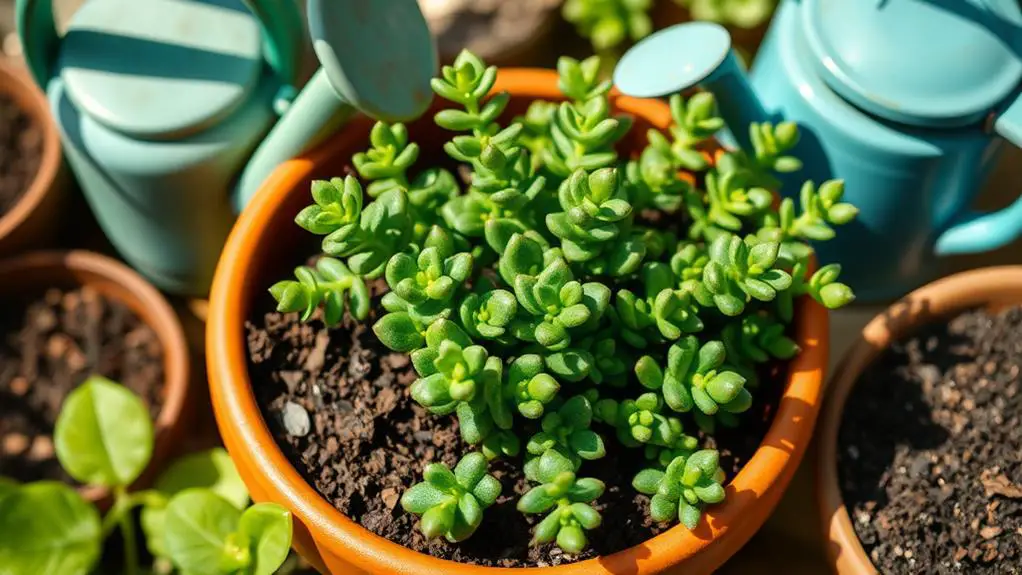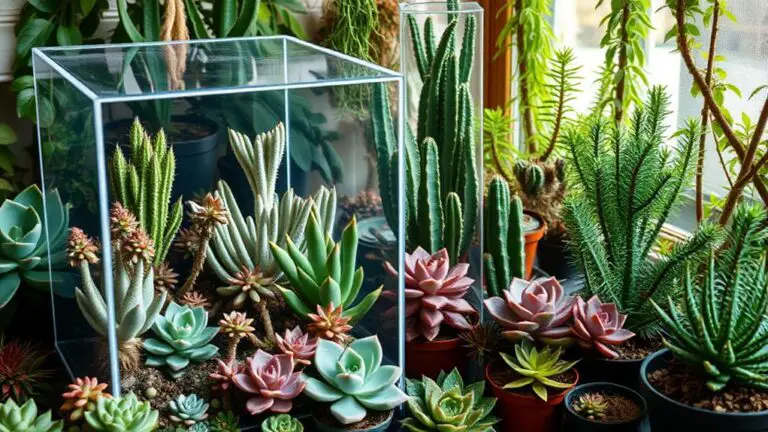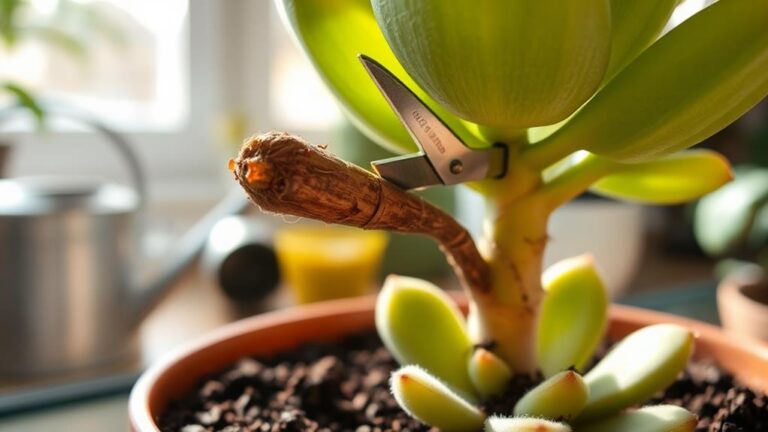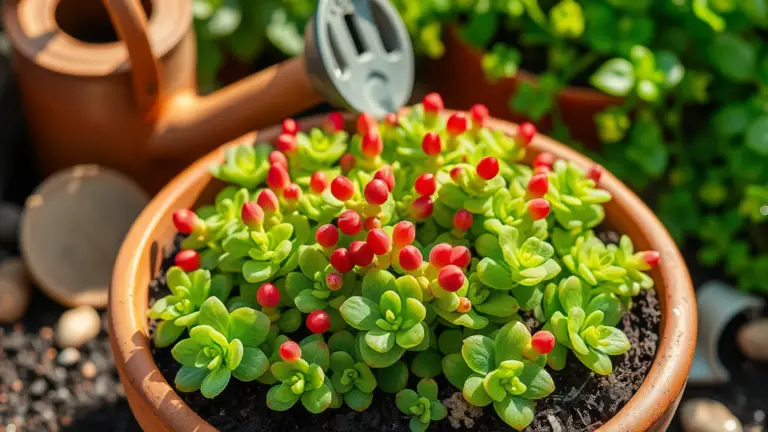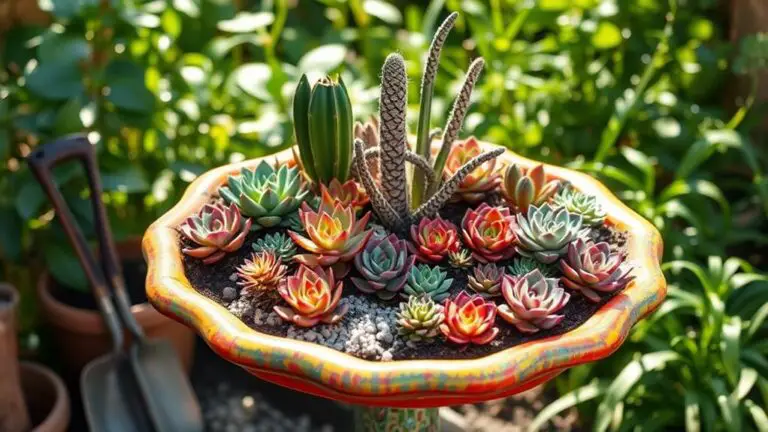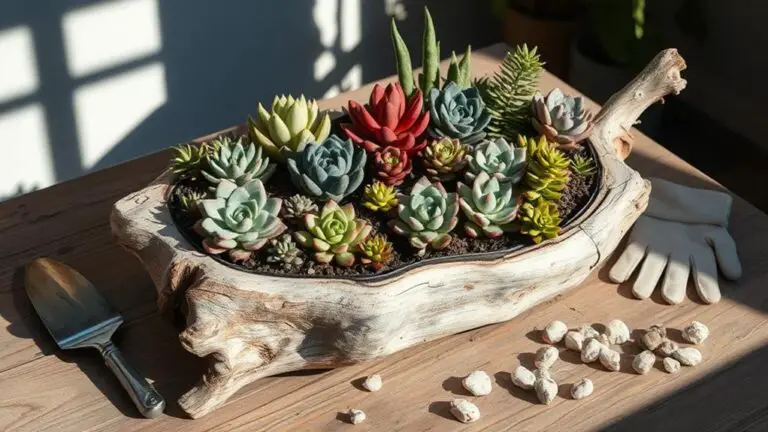5 Essential Steps to Care for Your Crassula Springtime
If you want your Crassula Springtime to thrive, you'll need to follow a few essential steps, starting with ensuring it gets the right amount of sunlight. Position it where it can soak up full to partial sunlight for at least six hours each day, remembering to rotate the plant regularly for even light exposure. But sunlight is just the beginning. What's next in the care regimen? From fertilizing and soil choices to maintaining the perfect temperature and dealing with pests, each step plays a significant role in keeping your Crassula Springtime healthy and vibrant.
Provide Adequate Sunlight

To guarantee your Crassula Springtime thrives, start by giving it the right amount of sunlight. This plant loves full to partial sun, needing at least 6 hours of sunlight each day for ideal growth. By making sure you provide adequate light, you'll help your Crassula stay healthy and vibrant.
When your plant doesn't get enough light, it may develop leggy growth, where the stems stretch towards the light source. This is a clear sign that it needs more sun. However, be cautious of excessive exposure. Too much direct sunlight, especially during the peak heat of the day, can cause leaf burn. You'll notice this as brown or scorched spots on the leaves.
To prevent uneven growth, rotate the plant periodically. This practice guarantees even light exposure, helping it grow uniformly.
Also, monitor light intensity throughout the year. During winter, sunlight might be less intense, so you may need to adjust your plant's placement to maintain its health.
Use Proper Fertilizer
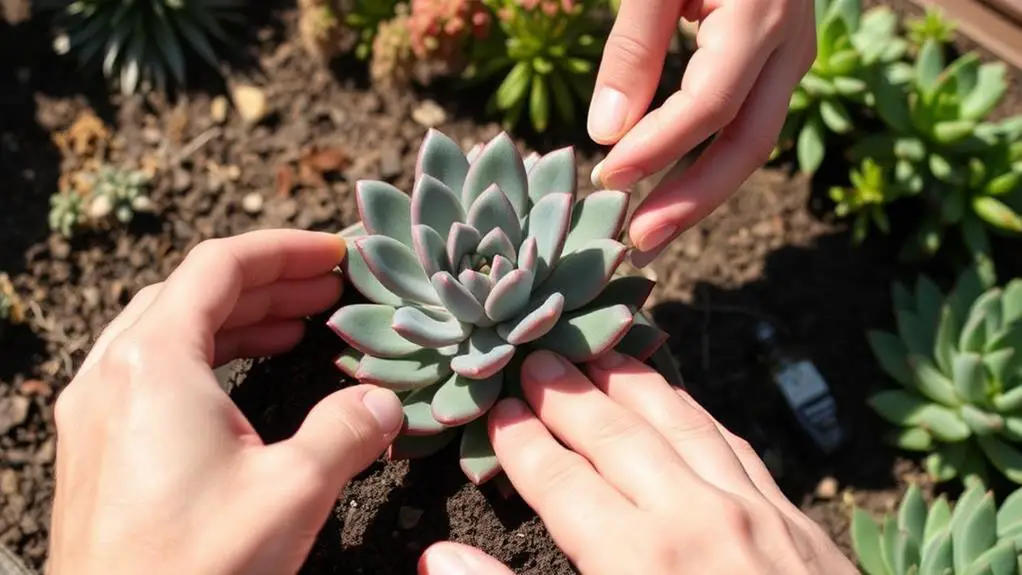
When it comes to nourishing your Crassula Springtime, using the proper fertilizer is vital for vibrant growth. You'll want to feed your plant with a balanced, diluted, water-soluble fertilizer every 2-3 weeks during the spring and summer. This schedule helps promote healthy growth by providing the right nutrient balance.
Choose fertilizer products specifically formulated for cacti and succulents to avoid over-fertilization. These products contain the perfect mix of nutrients that your Crassula Springtime needs.
Always monitor your plant's response to the fertilization process. Depending on its growth stage, you might need to adjust the feeding frequency. For example, younger plants might need more frequent feeding compared to mature ones.
It's important to avoid fertilizing during the dormant fall and winter periods. Fertilizing during these times can stress the plant and lead to root burn.
To maximize nutrient absorption and reduce the risk of root burn, water your plant before applying the fertilizer. This step guarantees that the nutrients are delivered efficiently.
Choose Well-Draining Soil
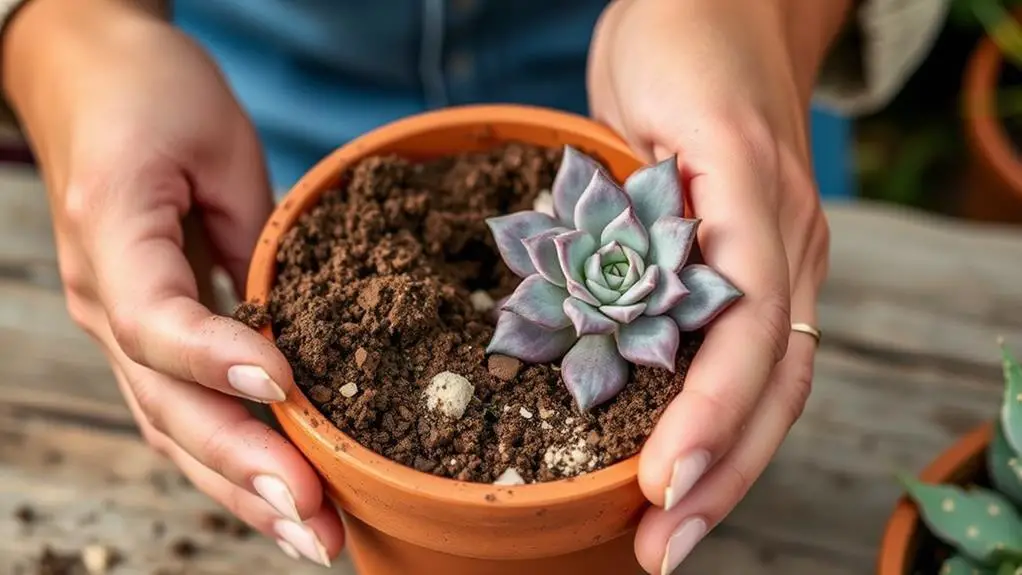
Guaranteeing your Crassula Springtime thrives starts with choosing well-draining soil. This type of soil is fundamental to prevent root rot, a common issue with succulents. A cactus or succulent mix is ideal because it supports optimal growth.
To enhance drainage and aeration, mix in perlite or coarse sand. These additions help keep the soil loose, promoting healthy root development.
Regularly check the soil condition to confirm it remains loose and well-aerated. Compacted soil can hinder moisture retention and root health, which are essential for your plant's well-being.
Avoid using overly fertile soil, as it can lead to excessive nutrient levels. Crassula Springtime doesn't need a lot of nutrients, and too much can actually harm its natural growth habits.
Repotting your Crassula Springtime every 2-3 years is a good practice. This process refreshes the soil and provides more space for root expansion, guaranteeing continued growth and vigor.
When repotting, always use a succulent mix with added perlite or coarse sand to maintain proper drainage.
Maintain Optimal Temperature
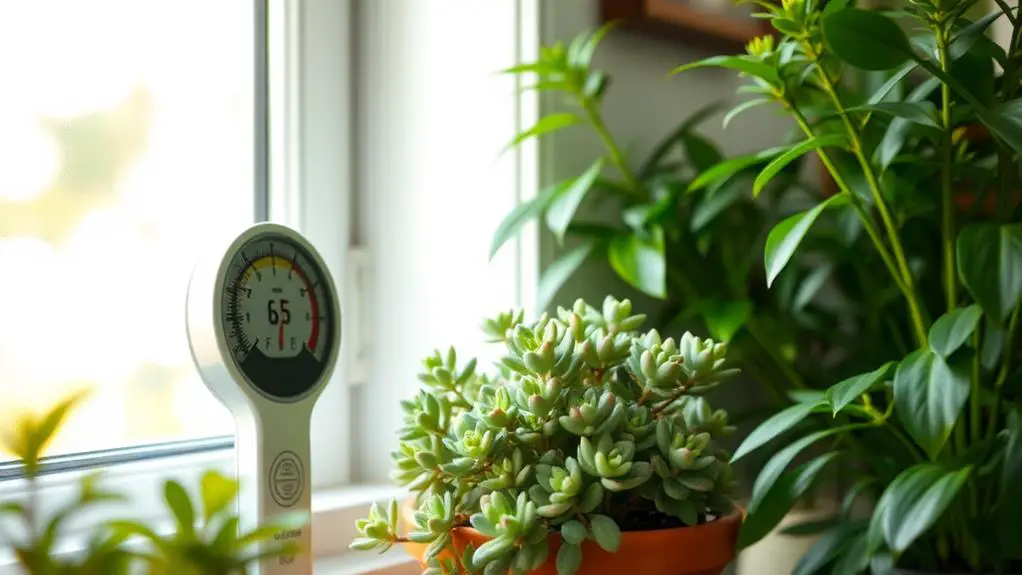
After selecting the right soil, maintaining the ideal temperature is key for your Crassula Springtime's health and growth. This succulent thrives in temperatures ranging from 60°F to 75°F (15°C to 24°C). Keeping your Crassula within this range guarantees it grows strong and healthy.
Indoor environments are often ideal for maintaining these conditions. If you keep your Crassula inside, it's easier to avoid the extreme temperatures that can harm it.
While the plant can tolerate temperatures as low as 40°F (4°C) and as high as 90°F (32°C), prolonged exposure to these extremes should be avoided. Protect your Crassula from frost since it's not cold hardy and can be damaged at temperatures below 30°F (-1.1°C).
To manage temperature fluctuations, especially during the growing season, consider using heat mats to keep the soil at a consistent temperature. This is especially helpful if you're propagating new plants.
Implement Additional Care

Proper care for your Crassula Springtime extends beyond the basics of soil and temperature management. To keep your Crassula rupestris thriving, it's important to implement additional steps like regular pest inspections.
Watch out for mealybugs and aphids, treating any infestations promptly with rubbing alcohol or organic insecticidal soap. This helps keep your succulent healthy and pest-free.
Pruning is another essential aspect of succulent care. Trim any dead or damaged leaves to encourage new growth and maintain an attractive appearance. When trimming, cut the stems above the leaf nodes to promote bushier growth, guaranteeing a healthy stem structure.
Make certain your Crassula Springtime has proper drainage and a consistent watering schedule. Allow the soil to dry out between waterings to prevent root rot. This is vital whether you're growing your plant indoors or outdoors.
Place it in a spot with indirect light to help it grow well. Consider companion planting to naturally deter pests and use organic methods for fertilization and pest control. This keeps your growing environment healthier.
Frequently Asked Questions
How Do You Care for Crassula Springtime?
To care for Crassula Springtime, give it bright, indirect sunlight for 6 hours daily, water using the soak and dry method, use succulent soil, fertilize every 4-6 weeks in spring and summer, and maintain temperatures between 60°F-75°F.
How Do You Make Crassula Bloom in Springtime?
To make your Crassula bloom in springtime, guarantee it gets at least 6 hours of bright, indirect sunlight daily. Maintain a consistent watering schedule, let the soil dry out, fertilize monthly, and reduce watering in winter.
How to Maintain a Crassula Plant?
You should place your Crassula in bright, indirect sunlight, water it thoroughly when the top inch of soil is dry, use well-draining soil, fertilize during spring and summer, and inspect regularly for pests to maintain it.
How Often Should I Water My Crassula?
You should water your Crassula when the top inch of soil feels dry, usually every 1-2 weeks. During fall and winter, reduce watering and only water when the soil is completely dry to prevent overwatering.
Conclusion
Taking care of your Crassula Springtime is easier than you think. Give it the right amount of sunlight, use a balanced fertilizer, and guarantee the soil drains well. Keep the temperature just right and always check for pests or damaged leaves. By following these simple steps, you'll help your plant thrive and stay healthy. Don't worry—you've got this! With a bit of love and attention, your Crassula Springtime will flourish beautifully.

